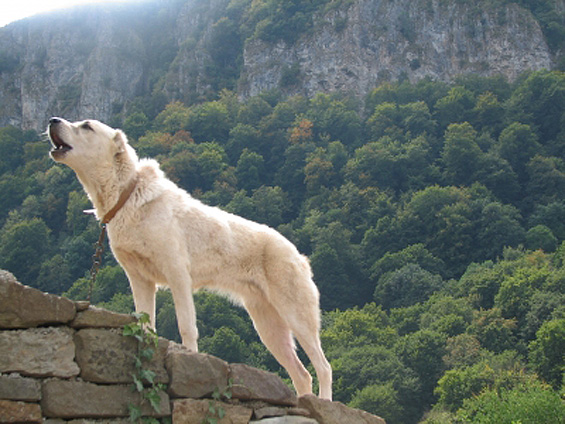
Magnificent are the Canadian Rockies near Canmore (where they filmed Dances with the Wolves). Spray lake is nestled close to the Three Sisters (mountains) with a picturesque view. In this white heaven is where Snowy Owl Tours gave my friends, my wife, and myself a howling adventure of dog sledding for the first time in our lives.
What can we learn from dog sledding?
1. You need to know your dogs especially your lead dogs.
There are 8 enthusiastic canines that pull a sled of three people. In fact they are harnessed according to their personality and strengths. Lead dogs are the first two dogs and are the most experienced. They are not necessarily the smartest but the best listeners and most focused. If they don’t lead, the team will not follow. We were told to always be praising and communicating with all the dogs but especially your lead dogs. The point dogs are the next two dogs in line and are being apprenticed to be lead dogs. In the middle are swing dogs. They are a pair of an older dog and younger dog helping balance each others energy and experience. Finally at the back, in front of the sled are the wheel dogs. They are the strong, undramatic, powerhouse dogs to move the sled.
Is this not a perfect example of teamwork?
2. There are 3 basic commands in dog sledding.
The first command is “hike or hike up.” When you give this command with energy the dogs go wild howling and bursting into the wilderness. They feel your energy and are born to run into the wild. The second command is “easy.” Believe me there will be times the dogs are running faster than you can handle around the mountain. Easy helps the dogs steady and slow down just a little to navigate those tight turns. The third command is, “whoa.” There are two basic reasons to stop. To conclude your trip of course and most importantly when a dog needs to take a poop break. We stopped several times when a dog needed to have a break and the entire team had to stop and let them do their business before we could proceed. I’m just saying. We also discovered how important to match your tone of voice with your commands. If you try to say whoa with fear and anxiety the dogs will keep running. If you stay calm and slowly say whoa they will come to a halt.
How do you communicate with your team?
3. The driver is the CEO of the sled.
The driver has several responsibilities on this adventure other than just riding on the back of a sled. You lead from the back of the sled.
The most important rule for the driver is “never let go.” It would be like a run away train. Also the driver has a responsibility to build a great relationship with and know his dogs. You appreciate their individual strengths. You motivate them with praise. You energize them with recognition.
The driver (CEO) also helps lighten the load and pull the sled. Going up a steep hill the dogs will look back and see if you are off the sled jogging or helping push. There is a delicate balance of not doing all the work because they will let you or not helping enough and they become frustrated with you.
My wife and I did a tandem drive from the back of the sled. I believe it’s even harder than driving the sled by yourself. We both had to balance each other, communicate, and coordinate without turning the sled over around turns or running off the mountain, like we almost did. This CEO almost got fired, eh.
How are your leadership skills?
Coaching points:
1. Are you appreciating, arranging, and leveraging the personality and strengths of your team?
2. Are you communicating effectively with your team?
3. How would you and your team evaluate your leadership skills?





